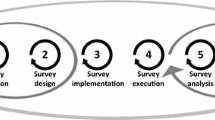Abstract
In service systems, variability is encountered in many components, interfaces, and entities interacting with the system. There could be variations in service system performance across different usage situations and conditions. There could be operator-introduced variations in operating the system, and there could be customer-introduced variability in service operations. Since the specific usage of the service system and the usage conditions can vary, the resultant variations in service performance can impact consumer preferences for and satisfaction with the service system. While some variability has a negative impact on customers, other kinds of variations may be preferred by customers. In designing service systems, one has to understand the sources and types of variability. Any service system that is designed should be robust to these variations––both in system performances and consumer preferences and satisfaction. Achieving the robustness criteria, however, implies consideration of a large number of design criteria across multiple functions––both system design and customer-facing functions. In this paper, we present the factors that need to be considered in service system design which encounter variations not only in usage, but also in operator and customer skill levels, perception of system complexity, preference and satisfaction. We identify the research issues involved and present a general framework to tackle such service system design problems.


Similar content being viewed by others
References
Berry LL (1980) Service marketing is different. Business 30:191–201
Bitner M (1990) Evaluating service encounters: the effects of physical surroundings and employee responses. J Mark 54:69–82. doi:10.2307/1251871
Bitner M, Faranda W, Hubbert A, Zethaml V (1997) Customer contributions and roles in service delivery. Int J Serv Ind Manage 8(3):193–205. doi:10.1108/09564239710185398
Brown SW, Cowles DL, Tuten TL (1996) Service recovery: its value and limitations as a retail strategy. Int J Serv Ind Manage 7(5):32–46. doi:10.1108/09564239610149948
Danaher PJ (1997) Using conjoint analysis to determine the relative importance of service attributes measured in customer satisfaction surveys. J Retail 73(2):235–260. doi:10.1016/S0022-4359(97)90005-1
Frei FX (2006) Customer-introduced variability in service operations, HBS no. 606-063. Harvard Business School Publishing, Boston
Karmarkar U, Pitbladdo R (1995) Service markets and competition. J Oper Manage 12:397–411. doi:10.1016/0272-6963(94)00014-6
Kelley S, Donnelly J, Skinner S (1990) Customer participation in service production and delivery. J Retail 66:315–335
Lovelock C (1983) Classifying services to gain strategic marketing insights. J Mark 47:9–20. doi:10.2307/1251193
Luo L, Kannan PK, Besharati B, Azarm S (2005) Design of robust new products under variability: marketing meets design. J Prod Innov Manage 22:177–192. doi:10.1111/j.0737-6782.2005.00113.x
McQuitty S, Hyman MR, Lover R, Sautter P, Stretemeyer AW (2005) Service variability and its effect on consumer perceptions and intentions, working paper 05-01. Department of Marketing, New Mexico State University
Meyer RJ (1981) A model of multi-attribute judgments under attribute uncertainty and informational constraint. J Mark Res 18:428–441. doi:10.2307/3151336
Rust R, Kannan PK (2003) e-Service: a new paradigm for business in the electronic environment. Commun ACM 36–42. doi:10.1145/777313.777336
Rust RT, Moorman C, Dickson PR (2002) Getting return on quality: cost reduction, revenue expansion, or both? J Mark 66:7–24. doi:10.1509/jmkg.66.4.7.18515
Sampson S, Froehle C (2006) Foundations and implications of a proposed unified service theory. Prod Oper Manage 15(2):329–343
Sasser W (1976) Match supply and demand in service industries. Harv Bus Rev 54:132–138
Spohrer J, Maglio PP, Bailey J, Gruhl D (2007) Steps toward a science of service systems. IEEE Comput 40(1):71–77
Author information
Authors and Affiliations
Corresponding author
Rights and permissions
About this article
Cite this article
Kannan, P.K., Proença, J.F. Design of service systems under variability: research issues. Inf Syst E-Bus Manage 8, 1–11 (2010). https://doi.org/10.1007/s10257-008-0104-2
Received:
Revised:
Accepted:
Published:
Issue Date:
DOI: https://doi.org/10.1007/s10257-008-0104-2




